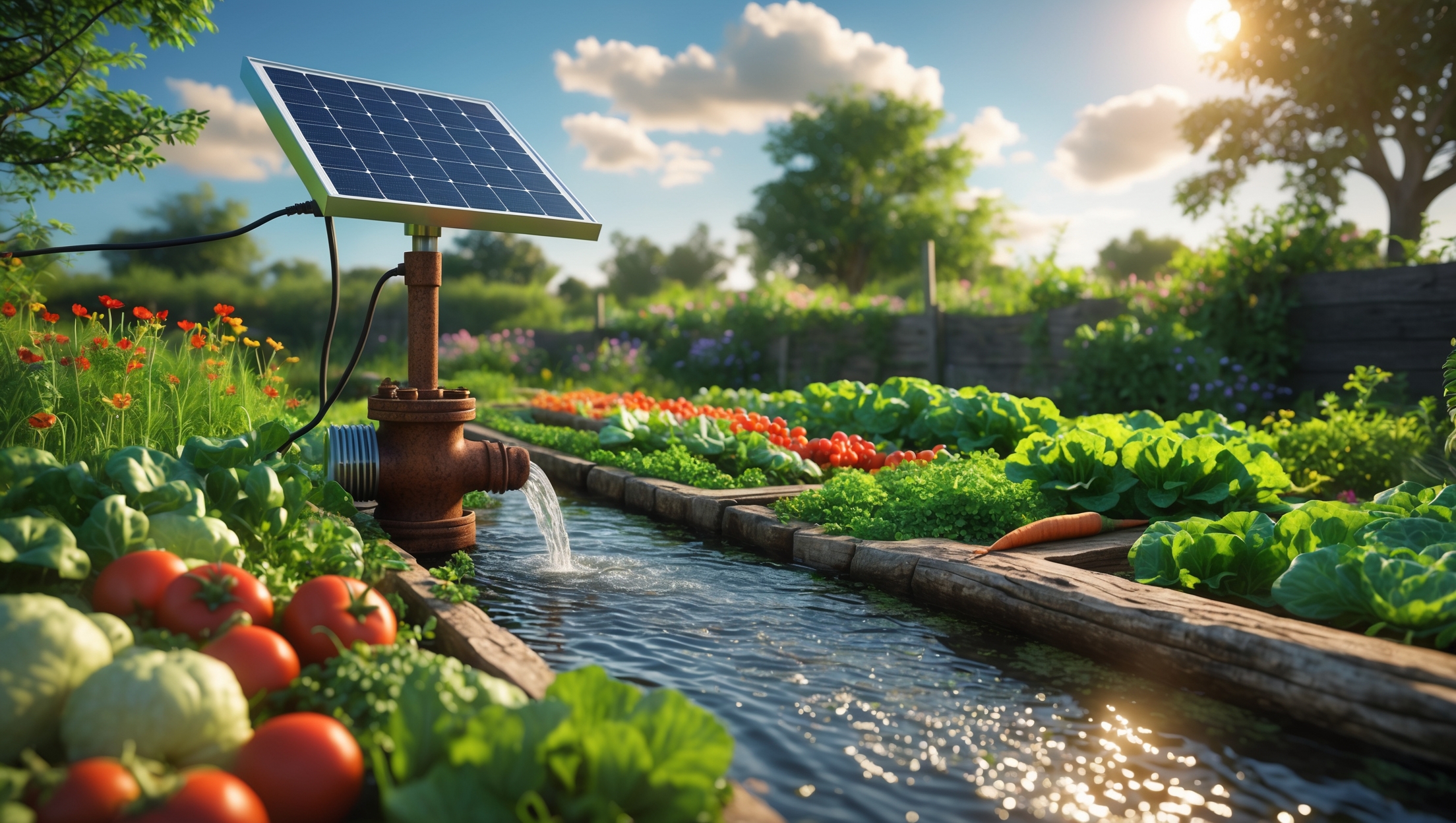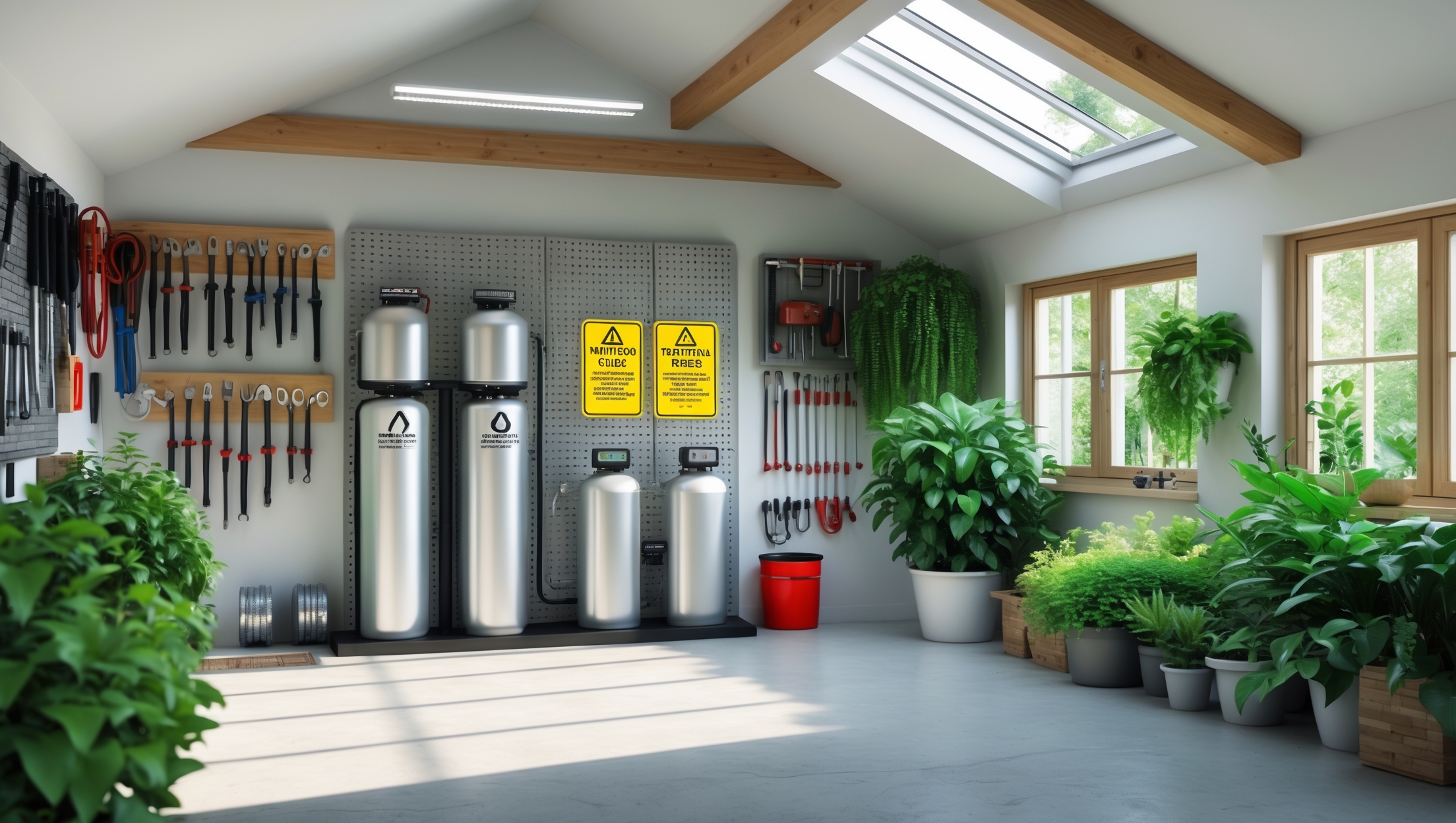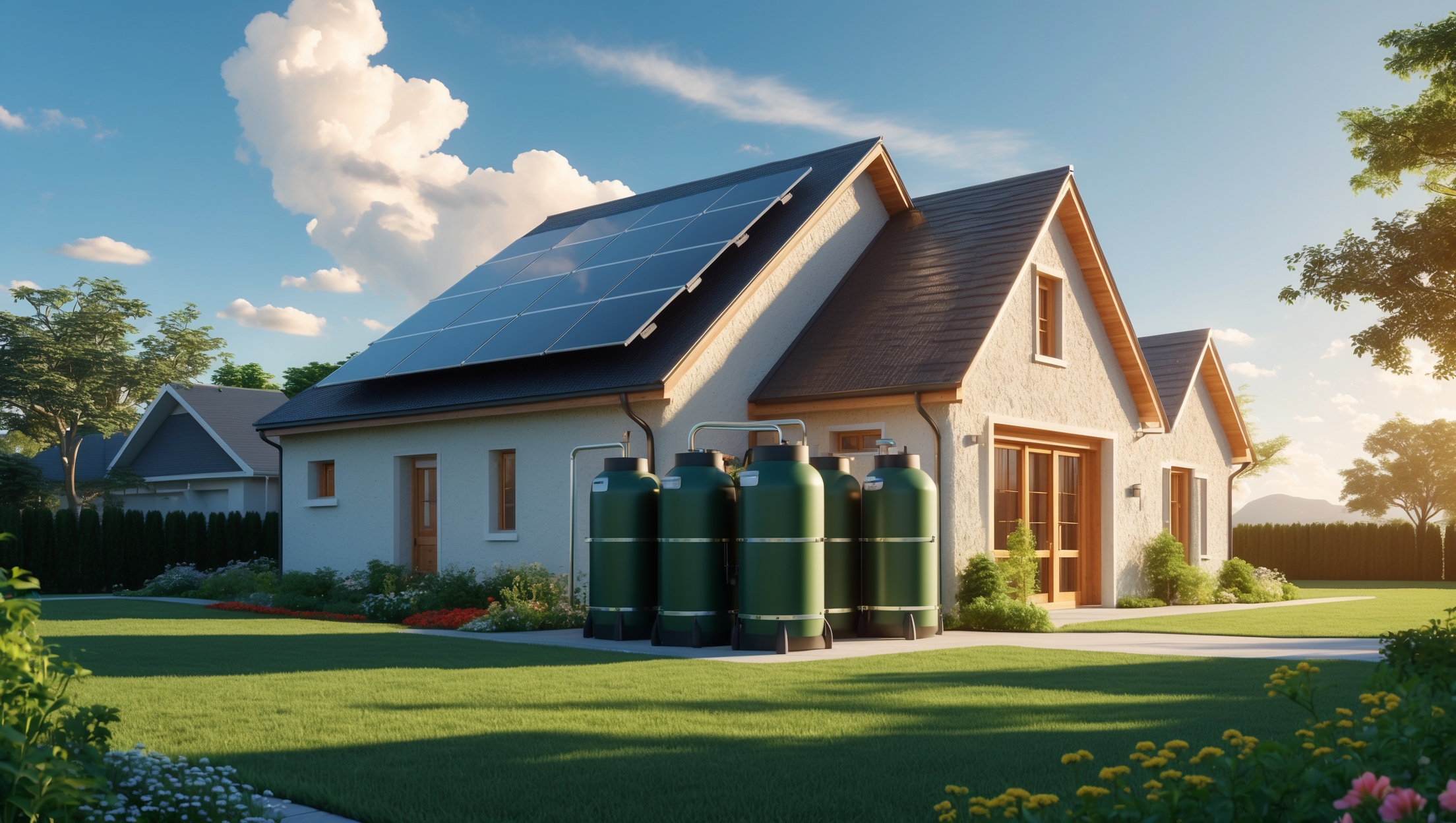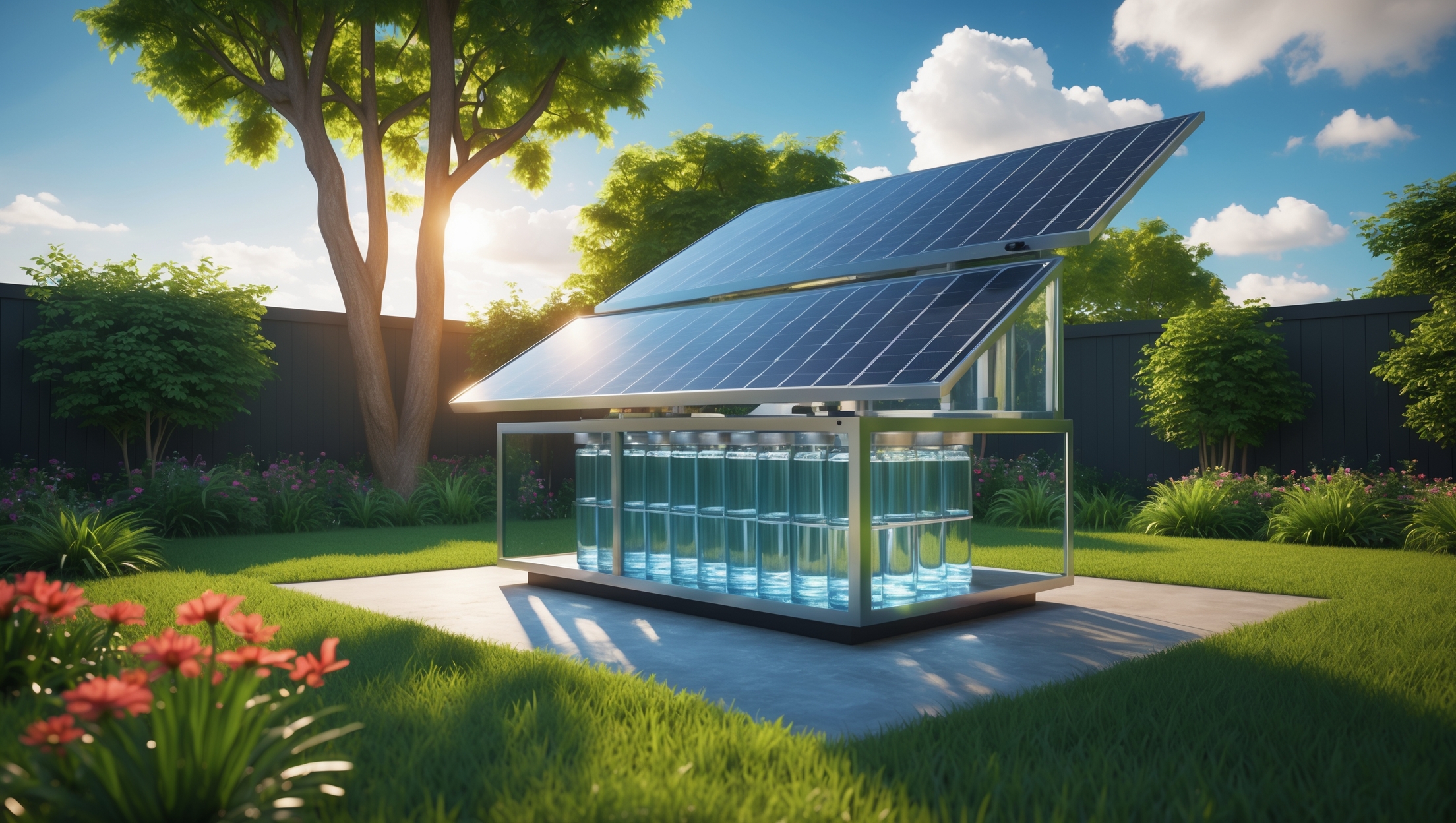Introduction: The Legal Path to Sustainable Irrigation
The shift towards sustainable living has led many homeowners to explore solar water pump systems as a solution for eco-friendly garden and landscape irrigation. These systems harness the sun’s energy to move water efficiently, reducing dependence on fossil fuels and saving money long-term. However, installing a solar water pump at home isn’t as simple as setting up the equipment and flipping the switch. Homeowners must navigate a complex web of regulations, permits, and compliance requirements that vary by locality, water source, and system size. Understanding and fulfilling these legal obligations is crucial—not only to avoid fines or project delays but also to ensure your sustainable investment is safe, reliable, and fully above board.
This guide takes a deep dive into the compliance and permitting landscape for home solar water pump systems. We’ll cover how to assess your local legal environment, the types of permits you may need, how to prepare a successful application, and the most common roadblocks and how to overcome them. Whether you’re irrigating a vegetable garden, maintaining a wildlife pond, or supplying water to a small orchard, you’ll find actionable advice tailored to real-world scenarios. By the end, you’ll be equipped to navigate the regulatory waters and start irrigating sustainably with confidence.
Understanding Solar Water Pump Systems and Their Regulatory Context
What Is a Home Solar Water Pump System?
A solar water pump system for home use typically consists of solar panels, a controller, a water pump (submersible or surface), and plumbing components. The system uses solar-generated electricity to power the pump, delivering water from a well, rainwater tank, pond, or other source directly to your irrigation system or storage tank. These systems vary in complexity, from simple plug-and-play kits to custom installations integrated with smart irrigation controls.
Why Do Regulations Apply?
At first glance, using sunlight to move water seems harmless. However, water rights, electrical safety, and environmental protection laws govern how, where, and when you can divert or utilize water. In many regions, even small-scale systems must comply with utility interconnection rules, electrical codes, and water use restrictions. Ignoring these requirements can result in fines, forced removal of your system, or liability for damages.
Identifying Applicable Regulations and Permits
Types of Regulations to Consider
- Local Building Codes: Most municipalities require permits for any electrical or plumbing work, including solar pump installations.
- Electrical Permits: If your system is grid-tied or involves wiring beyond a simple plug-and-play setup, you’ll often need an electrical permit and inspections.
- Plumbing Permits: Any modification to water supply lines or the addition of new irrigation infrastructure may require a plumbing permit.
- Water Rights and Use Permits: Drawing water from wells, streams, or ponds is often regulated. Even rainwater harvesting systems can be subject to local rules.
- Zoning Restrictions: There may be restrictions on the placement of solar panels, noise from pumps, or changes to landscape grading.
- Environmental Regulations: If your system affects wetlands, protected species habitats, or runs close to waterways, additional permits may be required.
Who Governs These Rules?
- Municipal building departments (city or county level) for general construction and electrical/plumbing permits.
- Water management districts or state environmental protection agencies for water rights and environmental compliance.
- Homeowners’ associations (HOAs) for neighborhood-specific restrictions.
Step-by-Step: Navigating the Permitting Process
Step 1: Research Your Local Requirements
Start at your local building department’s website or office. Search for solar water pump, solar irrigation, or renewable energy permitting. If information is sparse, look up general solar or water use permits and contact staff for clarification. Take note of:
- Permit application forms and fees
- Required supporting documents (site plans, system specs, installer certifications)
- Inspection processes and timelines
Step 2: Assess Water Source Regulations
- If using a well, check with your state water authority or local health department for well use permits and reporting requirements.
- For surface water (ponds, streams), determine if you need a diversion permit, especially during drought or in water-scarce regions.
- For rainwater harvesting, some states (like Colorado) have strict limits, while others encourage it.
Step 3: Prepare Your System Documentation
Successful permit applications typically require:
- Site plan: Map showing solar panel location, pump, water source, and irrigation zones.
- System specifications: Datasheets for the solar panel, pump, controller, and any inverters or batteries.
- Installer qualifications: Some areas require systems to be installed by a licensed electrician or plumber.
- Electrical and plumbing schematics: For larger or grid-connected systems.
Step 4: Submit Your Application
File your permit application with the local building department and any relevant environmental or water agencies. Pay required fees and provide complete documentation. Incomplete applications are the most common cause of delays—review requirements carefully.
Step 5: Inspections and Final Approval
Most jurisdictions require one or more inspections before you can operate your system:
- Rough-in inspection: Before the system is fully assembled, to check wiring and plumbing.
- Final inspection: After installation is complete, verifying code compliance and safe operation.
Keep all approval documents and inspection reports for your records and insurance purposes.
Common Compliance Challenges and How to Overcome Them
Challenge 1: Ambiguous Local Rules
Some localities do not have clear guidelines for solar water pump systems. In these cases:
- Reference state-level solar or water use policies.
- Request a pre-application meeting or written clarification from your local permitting office.
- Partner with experienced solar installers who can help interpret local codes.
Challenge 2: Water Use Restrictions
During drought or in water-scarce regions, additional restrictions may apply:
- Apply for water use permits early and plan for possible seasonal restrictions.
- Consider rainwater harvesting or greywater reuse to diversify your water sources.
- Install flow meters and keep usage logs as required by authorities.
Challenge 3: Homeowners’ Association (HOA) Rules
Some HOAs limit the placement of solar panels or irrigation infrastructure:
- Review your HOA’s covenants and submit a formal request if required.
- Demonstrate low visual impact with discreet panel placement or landscaping.
- Highlight the sustainability benefits to gain neighbor support.
Challenge 4: Electrical and Plumbing Code Compliance
Improper installation can lead to failed inspections:
- Hire licensed professionals for electrical and plumbing work where required.
- Use UL-listed and code-compliant components.
- Follow manufacturer installation guidelines exactly.
Documentation and Record-Keeping
What to Keep
Maintain a project binder (digital or physical) with:
- All permit applications and approvals
- System design and installation plans
- Inspection reports and certificates
- Warranty information and receipts
- Any correspondence with agencies or your installer
Why It Matters
Good documentation is essential for:
- Simplifying insurance claims or system upgrades
- Proving compliance if challenged by authorities or neighbors
- Increasing property value at resale
Case Studies: Real-World Permitting Success Stories
Case Study 1: Suburban Vegetable Garden Irrigation
In Oregon, a homeowner wishing to irrigate a 0.2-acre vegetable plot from a backyard pond used a 300W solar panel and submersible pump. They were required to obtain a plumbing permit for the new irrigation lines and a water right permit from the state water resources department. Providing a detailed site plan and using a licensed plumber expedited the approval, and the system passed inspection on the first try.
Case Study 2: Rainwater-Fed System in Texas
A Texas resident installed a rainwater harvesting system with solar-powered pumping for drought-tolerant landscaping. They discovered that local ordinances encouraged rainwater use, requiring only a simple plumbing permit. The city inspector focused on backflow prevention and overflow controls. By following city guidelines and submitting a schematic, the homeowner obtained approval within two weeks.
Case Study 3: Off-Grid Orchard Irrigation in California
A small-scale orchardist in Northern California set up a 0.5kW solar pump to draw well water for drip irrigation. Due to the region’s groundwater management rules, they had to submit monthly usage reports and install a flow meter. The county required both electrical and water use permits. By working with a certified solar installer and keeping thorough records, the orchardist stayed in good standing with regulators.
Tips for a Smooth Permitting Experience
- Start early: Some permits take several weeks to process.
- Contact local officials with specific questions; don’t rely solely on website FAQs.
- Prepare complete, organized documentation up front.
- Work with licensed installers familiar with local codes.
- Communicate proactively with inspectors and address any feedback promptly.
Conclusion: The Rewards of Legal and Sustainable Irrigation
Embracing solar water pump systems for home irrigation is a powerful step toward sustainable living, offering environmental benefits, long-term cost savings, and increased resilience in the face of water scarcity. Yet, the path to a legal, reliable, and effective system runs through a maze of permits, codes, and regulatory bodies. While the process can seem daunting, understanding local requirements, preparing detailed documentation, and engaging with authorities proactively will set you up for success.
The effort you invest in compliance not only protects you from legal headaches but also ensures your system operates safely and as intended. With every water-efficient harvest or blooming landscape, you’ll enjoy the peace of mind that comes from knowing your solar irrigation is both green and above board. Future buyers, neighbors, and even local officials will appreciate your commitment to doing things right. So, whether you’re watering a backyard garden or managing a small orchard, take the time to navigate permitting thoughtfully—your sustainable oasis will be all the more rewarding for it.
Ready to get started? Begin by mapping your project, researching your local regulations, and assembling your documentation. With persistence and a clear plan, you’ll soon be harnessing the sun to nurture your landscape—legally and sustainably.





You mention that requirements can vary by locality, water source, and system size. How can I find out exactly which permits or regulations apply in my city before I invest in a solar water pump setup?
To determine which permits or regulations apply in your city, contact your local building or planning department—they handle permits for new installations. It’s also important to check with your local water authority, since water use may have separate rules. Explain your intended solar water pump setup, including location, water source, and capacity, to get precise guidance on what’s required before you invest.
How do local homeowners usually find out which specific permits they need for a solar water pump system? Do you recommend starting with county offices, or is there a state-level resource that lists all requirements?
Homeowners generally start by contacting their county building or planning office, since most permits and requirements are handled locally and can vary even between neighboring areas. Some states provide general guidance online, but these rarely include every local detail. After checking with your county, you may also want to ask about any relevant state-level environmental or electrical regulations to make sure all your bases are covered.
After I get the system installed and permitted, are there ongoing inspection or compliance checks I should be aware of, or is it mostly a one-time process?
Once your solar water pump system is installed and properly permitted, most areas treat the process as largely one-time, especially for residential setups. However, some localities may require occasional inspections or annual compliance checks, particularly if your system connects to public water sources or impacts groundwater. It’s a good idea to check with your local permitting office about any ongoing obligations, so you can stay fully compliant and avoid unexpected issues.
After reading this, I’m a bit worried about delays. About how long does the permitting and compliance process usually take for a home solar water pump install? Are there any tips for speeding things up or common mistakes to avoid?
Permitting for a home solar water pump system typically takes anywhere from a few weeks to a couple of months, depending on your local regulations. To speed things up, gather all necessary documents—like site plans and equipment specs—before applying. Common mistakes include incomplete applications, missing signatures, or not checking local zoning rules. Reaching out to your permitting office early for guidance can also help prevent delays.
Could you elaborate on what the permitting process typically involves for a small orchard versus a backyard vegetable garden? Does the intended irrigation use significantly affect the kinds of inspections or approvals I should expect?
The permitting process can vary by location, but generally, a small orchard may require more detailed review than a backyard vegetable garden because it tends to use more water and may impact local resources. For orchards, officials might request irrigation plans, site maps, and sometimes environmental assessments. Backyard gardens usually face a simpler process, often just basic permits or notifications. The intended irrigation use does affect inspections—larger or commercial-type setups often prompt more thorough checks, while small-scale, personal gardens are typically subject to minimal scrutiny.
I’m in the planning stages for a solar pump to irrigate a small vegetable garden. About how long does the typical permitting process take from start to finish? I’m hoping to get it done before this growing season starts.
The permitting timeline for a residential solar water pump system can vary by location, but it often takes anywhere from two to six weeks, depending on your local authorities and how busy they are. To speed up the process, gather all required documents early and contact your local permitting office to confirm their current processing times. Starting soon should increase your chances of finishing before the growing season begins.
When assessing local regulations for installing a home solar water pump, is there typically a difference in the permitting process depending on whether you’re sourcing water from a rainwater tank versus a well?
Yes, there is usually a difference in the permitting process. Drawing water from a well often involves stricter regulations and may require specific permits related to groundwater use, well construction, and water rights. In contrast, using rainwater collected in a tank is generally less regulated, though local plumbing or storage rules might still apply. Always check with your local permitting office to understand the requirements for each water source.
How do the compliance requirements change if I decide to upgrade from a basic plug-and-play solar water pump kit to a more complex system with smart irrigation controls in the future?
When upgrading to a more complex solar water pump system with smart irrigation controls, compliance requirements often become more detailed. You may need updated electrical permits, inspections for new wiring or controllers, and possibly adherence to local water-use regulations. It’s important to check if your area requires licensed professionals for installation or additional safety certifications, as these requirements can be stricter for advanced systems compared to basic plug-and-play kits.
Could you explain what the most common reason is for having a permit application denied when trying to install a solar water pump? Is there any way to avoid these issues up front?
The most common reason permit applications for solar water pumps get denied is incomplete or incorrect documentation, especially lacking site plans or not meeting local zoning or water rights regulations. To avoid this, carefully review your local requirements before applying, gather all necessary documents, and consider consulting with your local permitting office or a qualified installer to ensure your application is thorough.
Are there any common mistakes first-timers make when preparing their solar water pump permit applications, according to your experience? I want to avoid delays or extra costs, so any tips would really help.
A common mistake is submitting incomplete documentation, like missing site plans or technical specifications. Double-check all local requirements, as some areas need specific details about water usage or electrical connections. Also, don’t overlook homeowner association approvals if required. Reviewing everything before submission and contacting your local permitting office with any uncertainties can help you avoid delays or additional fees.
If a homeowner encounters unexpected project delays due to compliance issues, what immediate steps would you recommend to get back on track and avoid jeopardizing investment in a solar water pump system?
If you face delays from compliance issues, first contact your local permitting office to clarify the specific requirements or missing documents. Address any paperwork or inspection gaps promptly, and if needed, consult a professional with permitting experience. Keeping detailed records and maintaining open communication with both authorities and contractors will help you resolve issues efficiently and prevent further setbacks to your solar water pump investment.
For homeowners who use rainwater tanks as their water source, are the permitting requirements typically different compared to those pulling from a well? I’m trying to figure out if it’s easier to stay compliant with stored rainwater versus groundwater.
Yes, permitting requirements are often different for rainwater tanks compared to wells. In many areas, using stored rainwater is less regulated or may not require permits at all, since you’re not extracting groundwater. Wells usually involve more complex permits and regulations because groundwater use can impact local resources. Always check your local or state guidelines, but rainwater collection is usually the simpler compliance route for homeowners.
If I start installing my solar water pump and then hit a snag with permitting halfway through, what’s generally the best approach to avoid getting fined or having to undo work? Is it better to pause the project, or can I keep going while sorting out paperwork?
If you encounter a permitting issue while installing your solar water pump, it’s usually best to pause the project until the paperwork is sorted out. Continuing work without proper permits can lead to fines or requirements to remove non-compliant installations. Contact your local permitting office right away to clarify what’s needed, and document your progress so you can show intent to comply if needed.
If I go with one of those simpler plug-and-play solar pump kits for my backyard, do I still need to go through the same permitting process as with a custom system? I’m trying to figure out how strict the local requirements usually are for smaller setups.
For plug-and-play solar pump kits, permitting requirements can vary based on your local regulations. Some areas may exempt small, low-powered kits from full permitting, while others treat all solar water pump installations the same, regardless of size or complexity. It’s a good idea to check with your local building or planning department to see if there are streamlined processes or exemptions for smaller setups in your area.
If my solar water pump will only be used to irrigate a vegetable garden from a rainwater barrel, do I still need the same permits as someone drawing water from a well or natural water source?
If your solar water pump only uses rainwater collected in a barrel for irrigating your vegetable garden, permitting requirements are usually less strict compared to systems drawing water from wells or natural sources. In many areas, using harvested rainwater is encouraged and may not require the same permits. However, local regulations vary, so it’s a good idea to check with your local permitting office to confirm if any specific approvals are needed for your setup.
You mentioned preparing a successful application. What kind of documents or supporting information do authorities usually ask for when applying for solar water pump permits?
Authorities typically request documents such as site plans showing the pump location, proof of property ownership or land use rights, technical specifications for the solar pump system, and sometimes an environmental impact assessment. You may also need to submit water source details, expected water usage, and installation diagrams. Double-check with your local permitting office as requirements can vary by region.
If my solar water pump system is just a small plug-and-play kit for a backyard vegetable garden, do I still need to go through the full permitting process, or are there exemptions for smaller systems?
For small plug-and-play solar water pump kits used in backyard gardens, some localities do offer exemptions or a simplified permitting process. However, requirements vary by region. It’s important to check with your local permitting office or municipal website to see if your system qualifies for an exemption based on its size, power output, and whether it connects to existing water lines or electrical systems.
I’m curious if the compliance requirements are different depending on whether I’m drawing water from a rainwater tank versus a groundwater well. Could you explain which water sources tend to involve more complicated permitting?
Yes, the compliance requirements do differ based on your water source. Drawing water from a groundwater well typically involves stricter permitting, including water rights, drilling permits, and sometimes environmental assessments. Using rainwater from a tank is usually less complicated, with fewer regulations, though some regions have rules about storage and usage. Always check your local authorities for the exact requirements.
I’m new to this and trying to get a sense of the timeline. Roughly how long does it usually take to get all the permits approved for a home solar water pump system, and what are the most common delays homeowners run into?
The permitting process for a home solar water pump system usually takes anywhere from a few weeks to a couple of months. Timelines can vary based on your local regulations and how quickly your application is processed. Common delays include incomplete paperwork, waiting for inspections, and coordinating approvals from multiple agencies. It’s helpful to double-check all forms and requirements before submitting to avoid setbacks.
I’m concerned about project delays—how long does the typical permitting process take for a residential solar water pump system, and are there ways to speed it up for families with busy schedules?
Permitting for a residential solar water pump system usually takes anywhere from a few weeks to a couple of months, depending on your local regulations and how quickly documents are processed. To speed things up, prepare all required paperwork in advance, check with your local permitting office about necessary forms, and consider hiring a solar installer who can handle the permitting process for you. This can save you time and help avoid common delays.